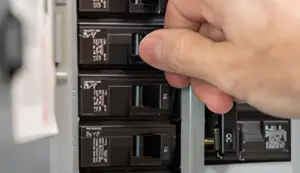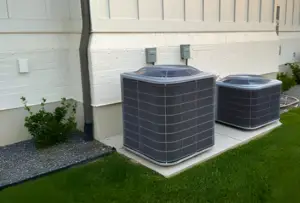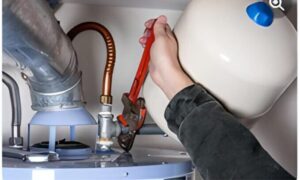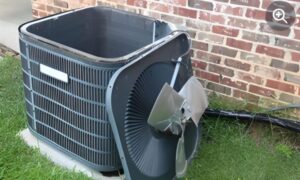Revamping older buildings can be a complex task, especially when it comes to upgrading the HVAC system. The replacement of outdated air conditioning systems requires careful consideration of space limitations and various factors.
Thankfully, there are options available, such as ductless systems and Variable Refrigerant Flow (VRF) systems, which can be particularly beneficial in constrained spaces. However, selecting the right HVAC system involves more than just considering the available space. Proper system capacity and load calculations play a crucial role in ensuring optimal performance and energy efficiency.
Moreover, if the building holds a designated landmark status, there are additional considerations to keep in mind.
In this comprehensive guide, we will explore different HVAC systems, discuss their advantages and disadvantages, and highlight the importance of consulting with professionals to make the best choice for revamping older buildings.
Space Considerations and Limitations
When revamping older buildings, it is essential to carefully consider the space limitations and restrictions that may impact the choice of HVAC system.
Space limitations are a common problem when replacing older building air conditioning. The available space in the building should guide the choice of HVAC system.
Options for replacing older building air conditioning with limited space include ductless systems and Variable Refrigerant Flow (VRF) systems.
It is advisable to consult with a qualified HVAC installer to assess space limitations and determine the best system.
If the building is a designated landmark, consulting with a preservation professional is necessary to understand renovation regulations that may impact HVAC system choice.
Considerations of space and limitations are crucial in ensuring the successful implementation of a suitable HVAC system for revamping older buildings.
Ducted Air Conditioning Systems
Considered a popular choice for homes, residential complexes, offices, and commercial buildings, ducted air conditioning systems play a crucial role in distributing heated and cooled air through a network of ducts installed behind walls and ceilings.
These systems are particularly suitable for environments where aesthetics are important, as they have hidden ductwork. In addition, ducted systems provide better airflow circulation and equalize air pressure conditions. They are also effective in removing moisture from the air, making them suitable for businesses that produce humidity.
When renovating and replacing an older building air conditioning system, it may be more cost-effective to replace only the central unit(s) if appropriate ductwork is already in place.
Ducted air conditioning systems are an efficient and reliable choice for maintaining comfortable indoor temperatures in a variety of settings.
Ductless Systems
Ductless systems, also known as split systems, are a practical and efficient solution for replacing older building air conditioning systems where ductwork is not feasible or desired. These systems consist of smaller air blowers mounted to walls and ceilings, eliminating the need for ductwork.
Ductless systems are suitable for businesses with varied climate control needs, as the air blowers can be individually controlled. They are also a good choice for maintaining a dust-free environment.
Ductless systems can be used to supplement existing air conditioning systems in additions or areas with different heating and cooling needs. When replacing older building air conditioning, especially in buildings with historic designations, ductless systems or Variable Refrigerant Flow (VRF) systems are recommended to preserve ceilings, floors, and outward facades.
VRF Systems for Preservation and Energy Efficiency
VRF systems offer a highly efficient and preservation-friendly solution for replacing older building air conditioning, particularly in buildings with historic designations. These systems have several advantages that make them suitable for preservation and energy efficiency:
- Simultaneous Heating and Cooling: VRF systems can supply heat and cooling simultaneously to different locations within the same building. This feature is especially beneficial for historic buildings that require preservation of collections or specific temperature control in different areas.
- Energy Efficiency: VRF systems are known for their energy efficiency. They use variable refrigerant flow technology to precisely match the cooling and heating load requirements, resulting in reduced energy consumption and lower utility costs.
VRF systems are an excellent choice for restaurants, retail stores, and offices located in space-constrained cities. They provide efficient and effective climate control while preserving the architectural integrity of historic buildings.
Proper System Capacity and Load Calculations
When replacing older building air conditioning, it is crucial to accurately determine the proper system capacity and conduct load calculations to ensure optimal performance and energy efficiency. Size matters when choosing the right HVAC system or replacing older building air conditioning. An oversized system can result in higher upfront costs, maintenance expenses, and energy usage. Oversized cooling systems do not run long enough to remove moisture from the air, leading to increased electricity consumption.
Proper load calculations are necessary to ensure the right system capacity for the space. Factors like building construction, weather conditions, insulation quality, and window and door thermal efficiency should be considered in load calculations.
Consulting With Professionals for Optimal HVAC System Choice
To ensure the optimal choice of an HVAC system for replacing older building air conditioning, it is essential to consult with qualified professionals who possess the expertise and knowledge necessary to navigate the complexities of space limitations, preservation regulations, and energy efficiency considerations.
Consulting with professionals will ensure that the chosen HVAC system is suitable for the specific requirements of the building and complies with any preservation regulations in place. These professionals can provide valuable insights and recommendations based on their experience and understanding of the unique challenges associated with older buildings.
Frequently Asked Questions
What Are the Potential Challenges and Limitations When It Comes to Space Considerations for Replacing Older Building Air Conditioning Systems?
Space limitations can pose challenges when replacing older building air conditioning systems. Options include ductless or Variable Refrigerant Flow (VRF) systems. Consult with an HVAC installer to assess space limitations and consider preservation regulations for designated landmarks.
How Do Ducted Air Conditioning Systems Differ From Ductless Systems in Terms of Installation and Functionality?
Ducted air conditioning systems use a network of ducts to distribute heated and cooled air, while ductless systems consist of smaller air blowers mounted to walls and ceilings, eliminating the need for ductwork.
What Are the Advantages of Using Ductless Systems for Businesses With Varied Climate Control Needs?
Ductless systems offer advantages for businesses with varied climate control needs. These systems allow for individual control of air blowers, making it easy to adjust temperatures in different areas. They are also suitable for maintaining a dust-free environment.
How Can VRF Systems Be Beneficial for Preserving Historic Buildings and Collections?
VRF systems are beneficial for preserving historic buildings and collections due to their ability to supply heat and cooling simultaneously to different locations within the same building. They are energy-efficient, quiet, and ideal for space-constrained cities.
Why Is It Important to Conduct Proper Load Calculations When Choosing the Right HVAC System for a Space?
Proper load calculations are vital when selecting an HVAC system for a space. Oversized systems result in increased costs, maintenance, and energy usage. Load calculations consider factors like building construction, weather conditions, and thermal efficiency to ensure the right system capacity.
Conclusion
In conclusion, revamping older buildings requires careful consideration of space limitations and the selection of an appropriate HVAC system. Ductless systems and Variable Refrigerant Flow (VRF) systems are ideal options for buildings with limited space.
Additionally, consulting with HVAC professionals and preservation experts is crucial to ensure compliance with renovation regulations and to determine the optimal system capacity and load calculations.
By following these guidelines, older buildings can be successfully revitalized with efficient and suitable HVAC systems.







